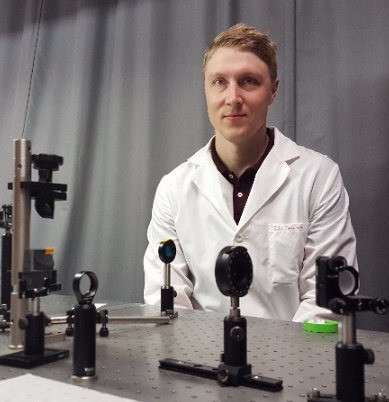Single-Molecule Imaging Reveals Conformational Heterogeneity of a Promiscuous Enzyme

It is not always as simple as one enzyme binding one substrate and catalyzing one reaction. Many enzymes show some plasticity to accommodate ligands of slightly different conformation in their active site. A good example is the vast number of drugs that are not the natural substrate of their target enzyme but still bind with impressive affinity. Enzymes with more than one function are commonly referred to as promiscuous. This moniker indicates either the ability to utilize different substrates, catalyze different reactions, or produce different products. These alternative activities are rarely fully characterized.
One enzyme that expresses a remarkable amount of promiscuity is the human Glutathione S-transferase alpha 1 (GSTA1-1). GSTA1-1 is a detoxification enzyme found in a variety of organisms from plants to humans. GSTA1-1 is not only able to utilize a variety of different substrates, but can also conjugate them to glutathione using substitution or addition reactions. GSTA1-1 also has the ability to isomerize some substrates. The ability to carry out different functions in one active site requires some structural flexibility.
In a study published this summer in Biochemistry, John Pettersson (Ph.D. '15), currently a research scientist at BioHybrid Solutions, investigated if the substrate promiscuity of GSTA1-1 is a result of a heterogeneous protein population, and if this heterogeneity is static or dynamic, using single-molecule imaging of ligand binding and dissociation kinetics. Along with Frederick Lanni, associate professor of biological sciences, and Gordon Rule, professor of biological sciences, they were able to identify different enzyme subpopulations with different binding characteristics and show that these different binding states correspond to two different conformational states of the active site.
GSTA1-1 is not only a good model enzyme to study enzyme promiscuity; it also shows promise in many therapeutic and biotechnological applications, and is therefore an active area of research.
Paper Citation:
Pettersson JR, Lanni F, Rule GS. Dual Lifetimes for Complexes between Glutathione-S-transferase (hGSTA1-1) and Product-like Ligands Detected by Single-Molecule Fluorescence Imaging. Biochemistry. 2017 Aug 8;56(31):4073-4083. doi: 10.1021/acs.biochem.7b00030. Epub 2017 Jul 27. PMID: 28677395.



